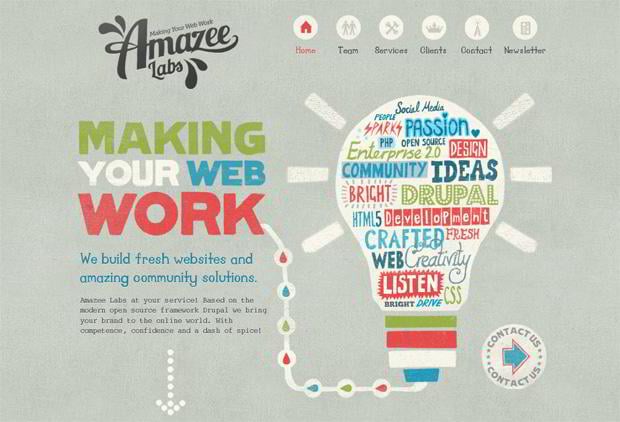In the past, internet sites were easy and focused on info. Navigating was straight, and style was for desktops. Now, user experience is crucial. Data overviews layouts for simple navigation. Receptive designs suit different tools. Today, dark setting lowers stress, and minimalist menus enhance navigation. Interactive functions engage individuals, and strong visuals stick out. AI assimilation enhances engagement. See just how design has developed to boost your on the internet journey.
Early Days of Web Design
In the very early days of web design, simpleness reigned supreme. top web design agencies were basic, with restricted shades, font styles, and layouts. The emphasis was on providing details rather than fancy visuals. Individuals accessed the internet through slow dial-up links, so rate and capability were crucial.
Navigation food selections were straightforward, generally situated at the top or side of the page. Sites were made for desktop computers, as mobile surfing had not been yet widespread. Web content was king, and designers prioritized simple readability over complicated style aspects.
HTML was the main coding language made use of, and developers needed to function within its constraints. Computer animations and interactive functions were marginal compared to today's standards. Internet sites were fixed, with little vibrant content or customized customer experiences.
Surge of User-Focused Style
With the development of site layout, a shift towards user-focused design concepts has actually become significantly popular. Today, developing web sites that prioritize user experience is essential for engaging site visitors and accomplishing company objectives. User-focused style involves recognizing the needs, preferences, and behaviors of your target market to customize the internet site's layout, web content, and includes appropriately.
Developers currently carry out extensive study, such as customer surveys and usability testing, to collect insights and responses directly from users. This data-driven approach aids in developing user-friendly navigation, clear calls-to-action, and visually enticing user interfaces that resonate with visitors. By placing the user at the facility of the style procedure, web sites can provide a more tailored and delightful experience.
Receptive style has also become a key aspect of user-focused design, making sure that sites are optimized for different tools and display dimensions. This adaptability boosts accessibility and usability, dealing with the varied means users connect with internet sites today. Essentially, the increase of user-focused design symbolizes a change towards creating electronic experiences that focus on the demands and expectations of completion customer.
Modern Trends in Website Design
Explore the current trends forming website design today. One prominent pattern is dark setting layout, providing a smooth and modern-day look while reducing eye pressure in low-light environments. An additional crucial trend is minimalist navigation, streamlining menus and boosting customer experience by concentrating on essential elements. Including micro-interactions, such as animated switches or scrolling effects, can create an extra appealing and interactive site. Responsive design continues to be critical, making sure smooth user experiences throughout numerous devices. Furthermore, using vibrant typography and unbalanced layouts can include aesthetic rate of interest and draw attention to particular content.
Integrating https://seopluginsforwix73950.bleepblogs.com/30376017/boost-your-pay-per-click-marketing-initiatives-by-implementing-effective-keyword-study-methods-that-will-transform-your-projects-learn-more-today , like chatbots for consumer assistance or personalized recommendations, enhances individual involvement and streamlines processes. Access has additionally become a significant trend, with designers prioritizing comprehensive style methods to cater to varied individual requirements. Embracing sustainability by enhancing internet site efficiency for speed and performance is another arising pattern in website design. Collaborating with individual comments and information analytics to iterate and enhance layout constantly is essential for staying appropriate in the ever-evolving electronic landscape. By embracing these contemporary trends, you can develop an aesthetically enticing, easy to use internet site that reverberates with your audience.
Conclusion
As you assess the development of internet site design from the very early days to now, you can see just how user-focused layout has ended up being the driving pressure behind modern patterns.
Accept top web design of adjustment and adjustment in web design, always keeping the individual experience at the center.
Remain existing with the latest patterns and modern technologies, and never ever stop advancing your approach to produce aesthetically spectacular and user-friendly sites.
Evolve, adjust, and develop - the future of website design remains in your hands.
